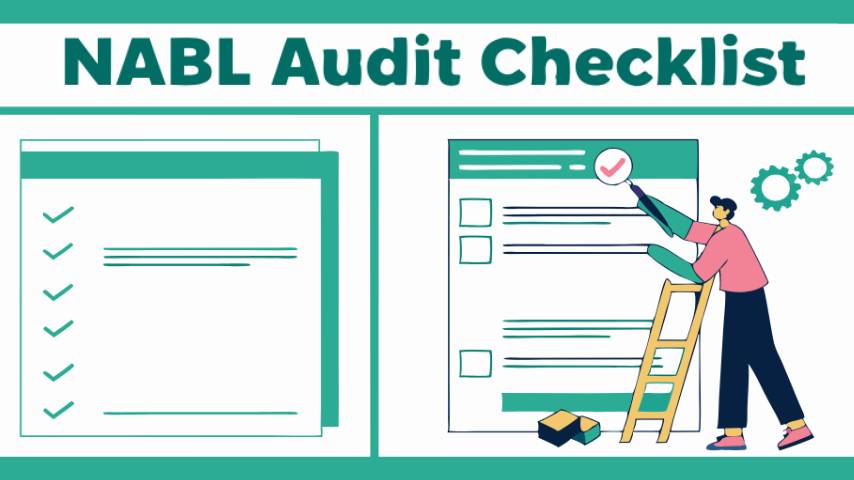How to Prepare a Quality Audit Checklist: A Comprehensive Guide
Understanding the Fundamentals of Quality Audits

Creating an effective quality audit checklist is crucial for maintaining high standards and ensuring compliance across your organization. Whether you’re preparing for an internal audit or getting ready for certification like NABL (National Accreditation Board for Testing and Calibration Laboratories), a well-structured checklist serves as your roadmap to success. In this comprehensive guide, we’ll walk you through the essential steps and components of preparing a quality audit checklist that delivers results.
Before diving into checklist creation, it’s essential to understand what quality audits aim to achieve. Quality audits are systematic examinations of a quality system to ensure:
- Compliance with established quality standards and procedures
- Effective implementation of quality management systems
- Identification of areas for improvement
- Documentation of best practices
- Verification of corrective actions from previous audits
Key Steps in Preparing Your Quality Audit Checklist
1. Define the Audit Scope and Objectives
Start by clearly outlining what your audit will cover. Consider:
- Specific departments or processes to be audited
- Time period under review
- Applicable standards and regulations
- Key performance indicators to evaluate
- Resource requirements and limitations
2. Review Relevant Documentation
Gather and review all necessary documentation, including:
- Quality manual and policy documents
- Standard operating procedures (SOPs)
- Previous audit reports and findings
- Corrective action reports
- Industry-specific regulations
- NABL audit checklist requirements (if applicable)
3. Structure Your Checklist Format
Create a logical structure that includes:
- Clear section headers
- Space for observations and findings
- Reference to relevant standards
- Priority levels for different items
- Sign-off sections for auditors
Essential Components of a Quality Audit Checklist
Management System Requirements
- Quality policy implementation
- Management commitment evidence
- Resource allocation documentation
- Internal communication processes
- Risk management procedures
Documentation Control
- Document approval systems
- Version control mechanisms
- Record retention policies
- Access control measures
- Update procedures
Process Control
- Standard operating procedures
- Process validation records
- Equipment calibration logs
- Environmental monitoring data
- Quality control measures
Human Resources
- Training records
- Competency assessments
- Job descriptions
- Performance evaluations
- Qualification verification
Special Considerations for NABL Audit Checklist
When preparing for NABL accreditation, your checklist should specifically include:
Technical Requirements
- Method validation procedures
- Measurement uncertainty calculations
- Equipment calibration records
- Reference material documentation
- Proficiency testing participation
Quality System Documentation
- Quality manual compliance
- Standard operating procedures
- Technical procedures
- Forms and records
- Quality control protocols
Best Practices for Checklist Implementation
1. Use Clear and Specific Language
- Avoid ambiguous terms
- Include specific requirements
- Reference relevant standards
- Provide examples where necessary
- Use actionable statements
2. Incorporate Risk-Based Thinking
- Identify critical control points
- Prioritize high-risk areas
- Include risk assessment criteria
- Document mitigation strategies
- Monitor effectiveness of controls
3. Ensure Proper Format and Organization
- Use consistent terminology
- Include revision dates
- Number sections clearly
- Provide space for comments
- Include reference documents
Digital Tools and Templates
Modern quality audit checklists often utilize digital tools that offer:
- Real-time data collection
- Automated scoring systems
- Digital signature capabilities
- Cloud storage for documentation
- Integration with quality management systems
Training and Preparation
To effectively use your audit checklist:
- Train auditors on checklist usage
- Conduct mock audits
- Review and update procedures
- Document training sessions
- Maintain competency records
Common Pitfalls to Avoid
When creating your quality audit checklist, watch out for:
- Over-complicated questions
- Vague requirements
- Missing regulatory requirements
- Insufficient detail
- Lack of objective evidence requirements
How often should quality audit checklists be updated?
Quality audit checklists should be reviewed and updated at least annually or whenever significant changes occur in processes, regulations, or standards. For organizations following NABL requirements, updates may be needed more frequently to maintain compliance.
What’s the difference between an internal and external audit checklist?
Internal audit checklists are typically more detailed and organization-specific, while external audit checklists focus on compliance with specific standards or certifications. However, both should maintain similar rigor in quality assessment.
How do you ensure objectivity in audit checklists?
Include clear, measurable criteria and require specific evidence for each checkpoint. Avoid subjective language and ensure questions can be answered with definitive “yes/no” responses or quantifiable measures.
What role does risk assessment play in creating audit checklists?
Risk assessment helps prioritize audit areas and determine the depth of investigation needed. High-risk processes should have more detailed checkpoints and require more substantial evidence of compliance.
How detailed should an audit checklist be?
The checklist should be detailed enough to ensure consistency and thoroughness but not so complex that it becomes unmanageable. Each item should clearly state what evidence is required for compliance.
Conclusion
A well-prepared quality audit checklist is fundamental to maintaining and improving quality management systems. Whether you’re preparing for NABL accreditation or conducting internal quality audits, your checklist should be comprehensive, clear, and aligned with relevant standards. Regular updates, proper training, and consistent implementation ensure your audit process remains effective and valuable to your organization.
Remember that your checklist is a living document that should evolve with your organization’s needs and regulatory requirements. By following the guidelines outlined in this article and maintaining a commitment to continuous improvement, you can develop and maintain a quality audit checklist that serves as a powerful tool for quality assurance and compliance.
Through careful preparation, regular updates, and proper implementation, your quality audit checklist will help maintain high standards, ensure compliance, and drive continuous improvement across your organization. Whether you’re working toward NABL accreditation or maintaining existing certifications, a well-structured audit checklist is your key to success in quality management.







